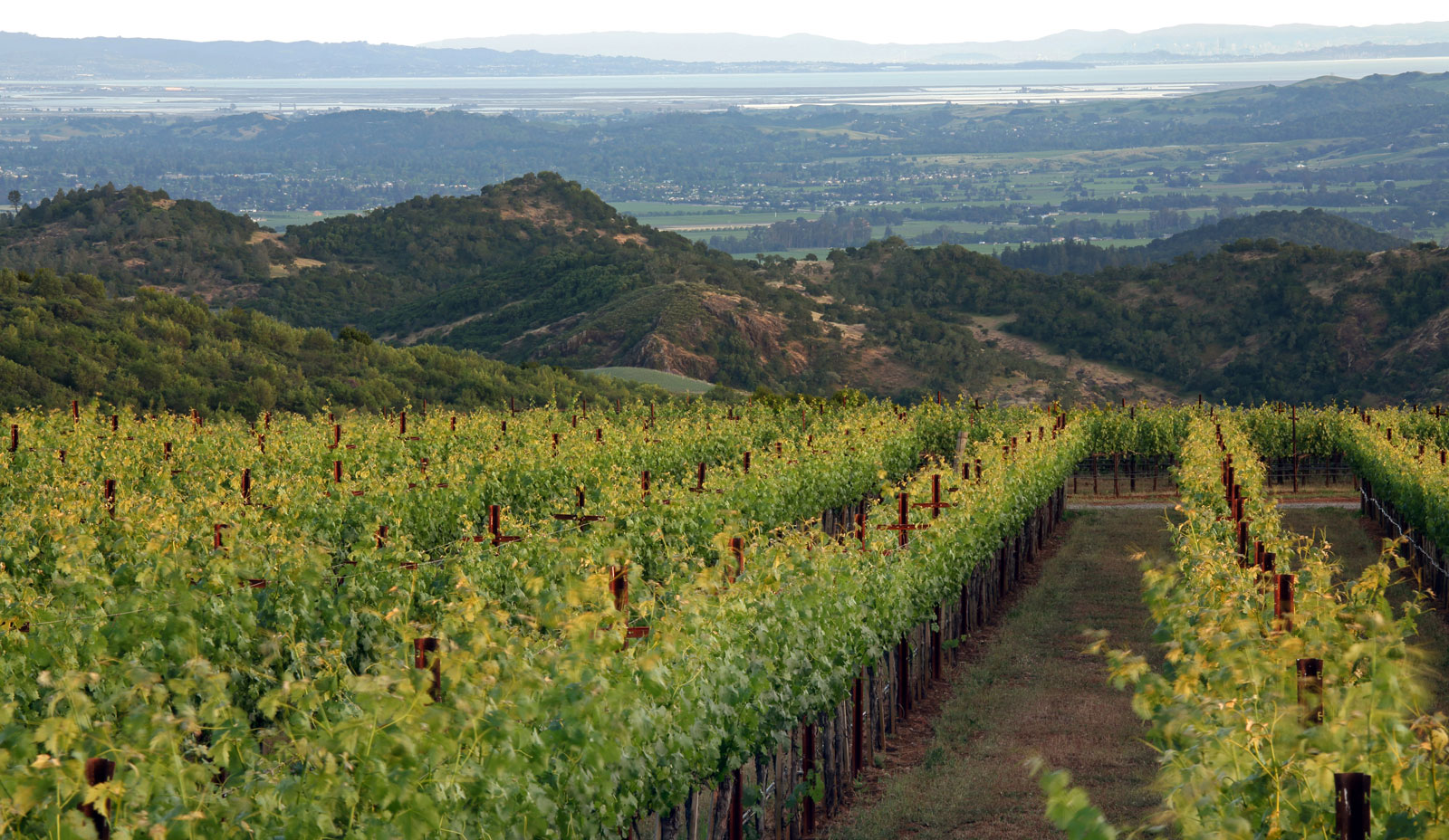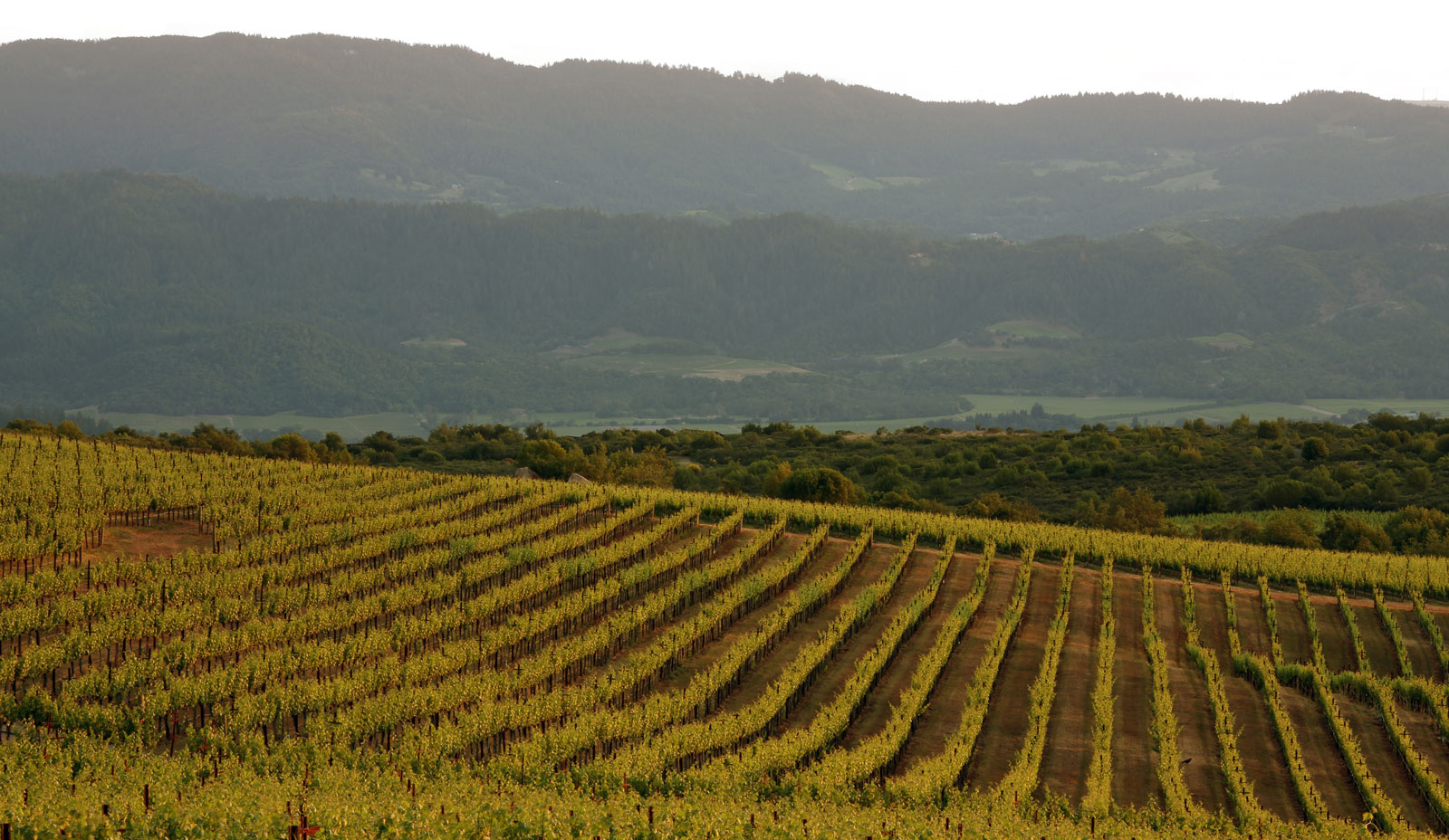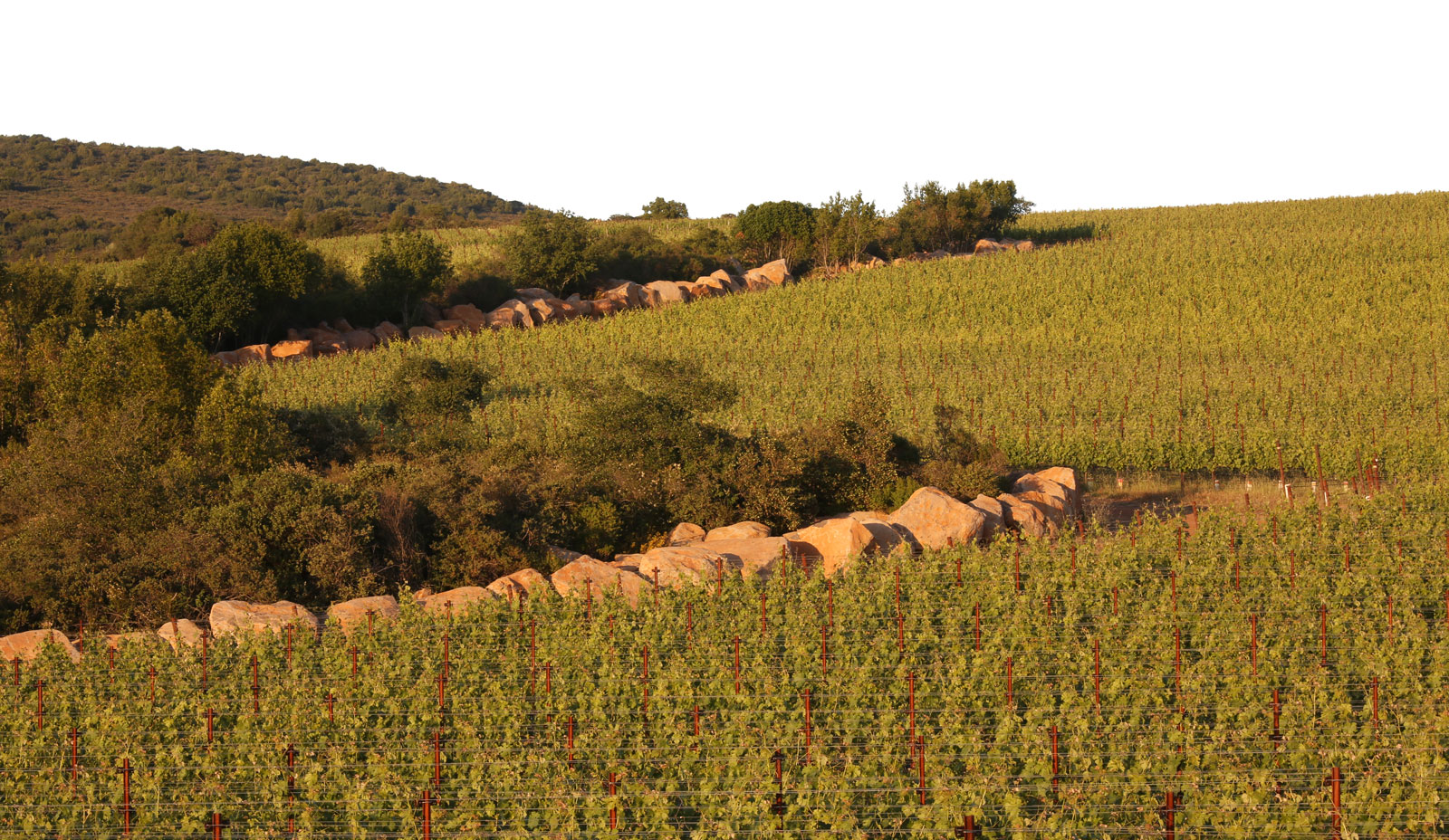We use cookies to optimize your experience, analyze traffic, and personalize content. To learn more, please visit our Privacy Policy.
By using our site without disabling cookies, you consent to our use of them.
SITE IS WINE
Site is the soul of a wine. It is what shapes it, nourishes it, imbues it with character and distinction and poetry. Great wine cannot exist without a great site, but it is up to us to realize that potential. Cesare Mondavi perceived this in the thirties when he recognized the potential of Napa Valley. Robert Mondavi understood it when he bought vineyard land in Oakville. And Tim Mondavi sought it ardently when we established Continuum on Pritchard Hill. Truly exceptional locations are neither obvious, nor common, nor easy to come by. It seems provenance has led our family through generations to our Sage Mountain Vineyard and we are privileged to now be the caretakers of this gifted site.
Why We’re Here
Early in his winemaking career, Tim Mondavi had come to deeply know his father’s vineyards on the valley floor in Oakville. For Continuum, he literally had higher aspirations. After the sale of Robert Mondavi winery, Tim and his sister Marcia began to devise Continuum as a winery that would stand shoulder-to-shoulder with the world’s best.
Such an ambition required a remarkable site. Decades of experience taught Tim that the world’s most renowned wines are grown on slopes—some gentle, some steep—and so Tim knew that Continuum must be grown on hillsides and at elevation, where drainage, temperature gradients, and sun exposure all favor fine wine production.
After several years of searching, Tim found a gorgeous, undulating stretch of land high on the slopes of Pritchard Hill on Napa’s east side. Tim could sense that rare spark of exceptional terroir and knew that with refinement and direction, the property could produce the wine he and his sister envisioned.
A far cry from the fertile valley floor soils in which our family’s identity had long been rooted, this rugged, mountainous site represents a very real break from our past. Poetically, the sweeping vistas from the estate trace our family’s history from our distant past in Saint Helena, to our recent past in Oakville, and up to our present and future at Sage Mountain Vineyard.
Sage Mountain Vineyard
Continuum Estate is located on a place known locally as Pritchard Hill, a landform on Napa’s eastern side hailed for the rarefied quality of the wines grown there. However, we prefer a different, more descriptive name for our site: Sage Mountain. And when we talk of our Sage Mountain Vineyard, each word speaks for itself as an essential component of our terroir and our wine: Sage. Mountain. Vineyard.
Mountain
Arriving at Continuum evokes an expansive feeling of entering into a new floating world, high above the valley. The upper reaches of Sage Mountain are an intricate, undulating hillside, whose altitude and aspect provide wonderful advantages to fine winegrowing.
The high elevation of our vineyards – ranging from 1325 to 1600 feet – keeps us above the fog line. While lower vineyards are socked in by a blanket of ocean fog in the mornings, ours bask in clear, bright sunlight. At night, warm air rises from the valley floor and bathes the vineyards, allowing ripening to gently continue. In the daytime, cool bay breezes tame the late summer sun. These moderating dynamics consistently and gently drive grape maturation, leading to optimal development of layers of flavor and structure in our resulting wines.
Our slopes face west and southwest, giving us commanding views over Napa Valley and the San Francisco Bay, while capturing afternoon bay breezes. Like clockwork, these breezes sweep across the valley sides, vanquishing excess moisture and keeping the vines in a state of health and vitality, while thickening the skins of the grapes to add density, structure, and depth to our wines.
Vineyard
Soil is the physical foundation of a vineyard and its lifeblood. Our red, rocky, and mineral-rich volcanic soils are shy and extremely well-draining with low fertility. Such soils force the vines to struggle, but also give them strength and vitality. The struggle to flourish in challenging conditions gives the vines personality, mettle, beauty, and grace. The vines naturally produce small crops of intense, structured, and complex fruit—ideal when the goal is to make world-class wine.
Sage Mountain’s rippling hillsides offer a kaleidoscope of exposures and inclines, so our vineyard plantings are naturally diverse. Varying topographies and soil compositions make each block distinct, and to honor this individuality and to ensure the potential of each facet of our property is realized, we farm each one as if it was its own vineyard. We apply the most beneficial elements of organic and biodynamic farming to honor the quality inherently locked in the earth and to ensure its ongoing health through the generations. The diversity and vitality of the estate contribute to a multifaceted wine of great structural and aromatic complexity.
Only 71 acres of our total 173 are under vine, keeping a balance between wilderness and cultivation and ensuring the biodiversity of our estate. Many of the plantings date back to 1991, 1996, and 2010, with a few more recent replants and developments. Cabernet Sauvignon makes up 55% of the estate, Cabernet Franc 30%, Petit Verdot 10%, and Merlot 5%. Vineyard spacing, row direction, rootstock and clonal choices are selected to match the specific needs of each 1-2 acre vineyard block.
Sage
The habitat surrounding a vineyard cannot be seen as something wholly separate from the vines. The staunchest fence in the world cannot prevent their constant interaction. Around our vines, we are blessed to have a beguiling wilderness, bristling with energy, vitality, and a diversity of flora and fauna. These native living systems share the same air, same soil, and same spirit as our vines.
The vegetation that thrives on our property is uniquely aromatic and savory, a chaparral of chamise, pungent bay laurel, scrub oak, manzanita, and, of course, wild sage. Besides providing a habitat for beneficial insects and other wildlife, this tangle of forest plants gives our wines an undeniable perfume of place. And this scent, rich, wild, and savory is threaded delicately into the wine.


















